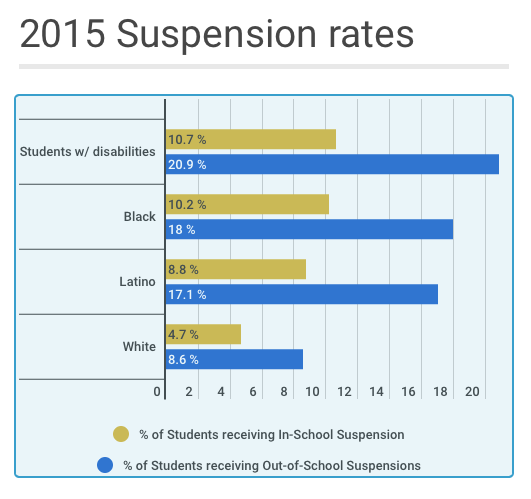Report: Minority, disabled students punished disproportionately
Wareham Public School administrators are grappling with a punishment disparity where black, Latino and students with disabilities are twice as likely to be disciplined, according to newly released state data.
Wareham, along with 24 other schools in 18 districts, has been identified as needing to reduce suspensions, which state officials say lead to higher dropout rates.
The Department of Elementary and Secondary Education released the information on Monday. It shows that minorities and students with disabilities receive disproportionate punishments compared to other students.
Superintendent Dr. Kimberly Shaver-Hood said the information was submitted per a recently passed state law. With the new information in hand, she said officials are working to close the gap.
“We’ve added behaviorists in each building, we added additional assistant principal support,” said Shaver-Hood. “We’re looking at the root cause of the problem to figure out why students are misbehaving.”
Overall, Latino, black and students with disabilities were punished more than white students. Of the district's 2,966 students, 747 were classed with disabilities while 244, 170 and 2,188 were classified as black, Latino and white, respectively.
Across the district, 23 percent of students with disabilities were disciplined, as were 20 percent of all black students and 19 percent of all Latinos. In comparison, 10 percent of all white students were disciplined in 2015.
To address that, Shaver-Hood said officials are formulating a plan.
“We’re still in the planning stages,” she said. “We’re looking at coming up with a framework to implement next year to address this.”
When it comes to suspensions, a higher percentage of minorities and students with disabilities end up receiving them.
In 2015, 14.4 percent of Latino students who were disciplined received in-school suspensions while 12.6 percent were given out-of-school suspensions. Of black students disciplined, 7.6 percent and 13.8 percent received in-school and out-of-school suspensions, respectively.
That same year, 5.3 percent of disciplined white students were suspended in-school and 8.5 percent were suspended out-of-school.
Students with disabilities received the most suspensions – 11.2 percent of those disciplined were given in-school suspensions and 17.8 percent received out-of-school suspensions.
Last year, 336 of the district’s 2,804 students were disciplined, a decrease from the 368 disciplined in 2014.
Of those 336, 6.7 percent received an in-school suspension while 9.5 percent were suspended out of school. No students were expelled.
According to state officials, lowering suspension and expulsion rates results in a stronger academic environment.
“The Department looks forward to learning with these districts and implementing practices that will reduce reliance on suspension and expulsion while at the same time ensuring that schools are a safe and orderly learning environment,” said Commissioner of Elementary and Secondary Education Mitchell Chester. “In many cases, the participating districts and schools already have taken steps to reduce suspensions.”
To read the complete Student Data Discipline Report, visit http://www.doe.mass.edu/ssce/discipline/















